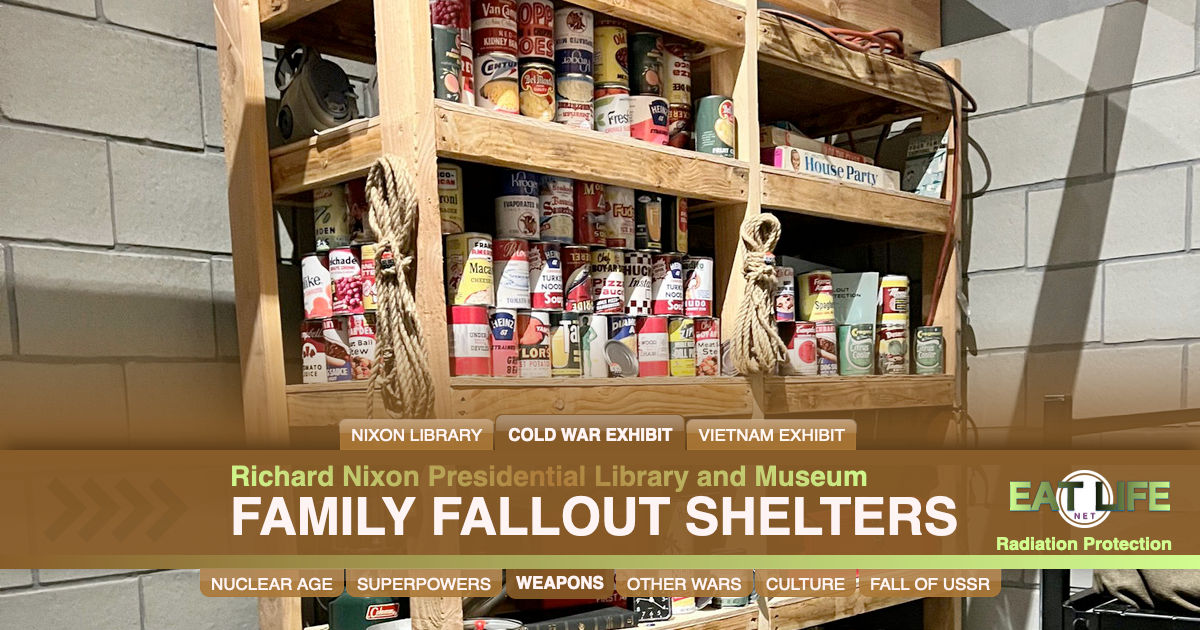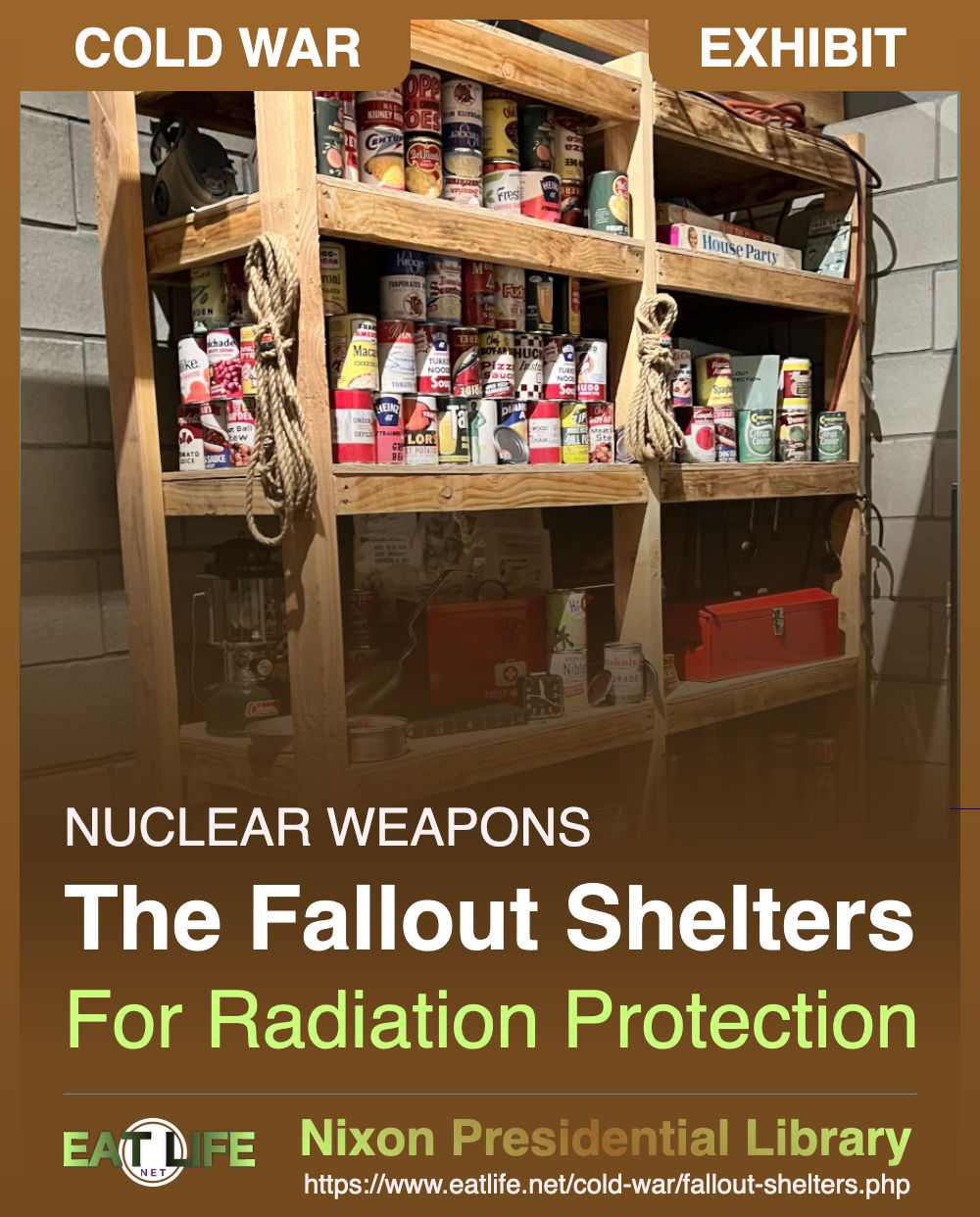In 1950, President Truman signed into law the Federal Civil Defense Act, creating the Federal Civil Defense Administration, which was given the responsibility of formulating national civil defense policies.
Among the more interesting initiatives of the federal Civil Defense efforts was the creation of fallout shelters to protect people from the deadly radiation released in a nuclear attack.
Initially, owners of public buildings were urged by the federal government to create fallout shelters in their facilities. But as increasing numbers of above-ground nuclear weapons tests were conducted by both the United States and the Soviet Union - and reports spread of the destructive fallout these tests generated - people began building fallout shelters of their own.
In 1959, the United States government published a pamphlet called, The Family Fallout Shelter. Millions of copies of this booklet, which described how to construct and equip a fallout shelter, were distributed across the nation.
To encourage IBM's 60,000 employees to build fallout shelters, the company's CEO, Thomas Watson, Jr., offered interest-free loans to the firm's workforce and arranged to make the construction materials available at cost.
Fortunately, these shelters were never put to the test.
The National fallout shelter policy is based firmly on the philosophy of the obligation of each property-owner to provide protection on his own premises. - 1958
Fallout protection for every American as rapidly as possible. - October 6, 1961

A Geiger counter is an electronic device used to measure ionizing radiation levels. It can be used to evaluate the level of exposure of alpha particles, beta particles, and gamma radiation rays.
- Turn the dial switch from "OFF" to any of the three (3) ranges.
- Using the wand, you can explore some household items on the table to measure and look for a reading on the Geiger counter.
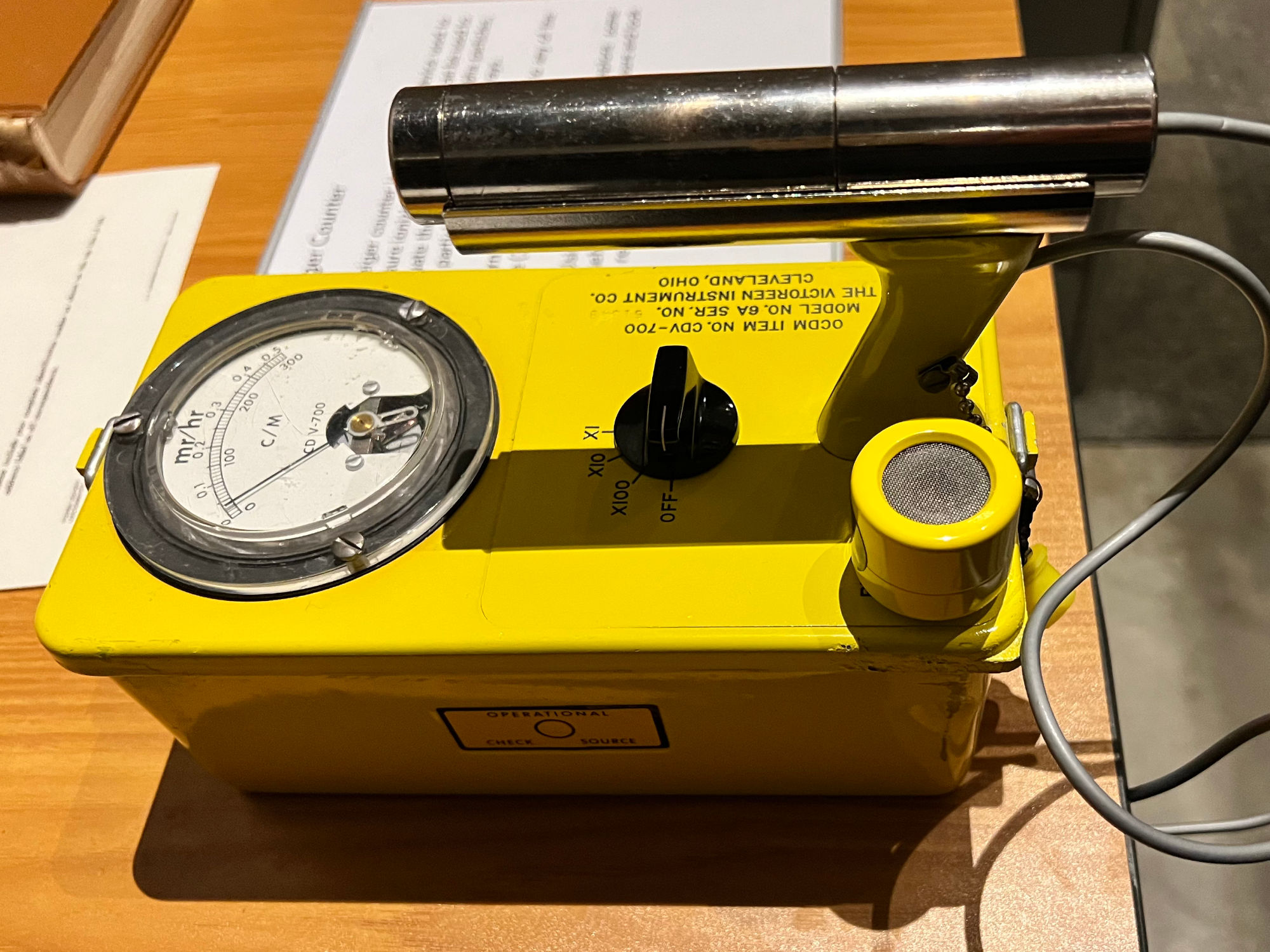


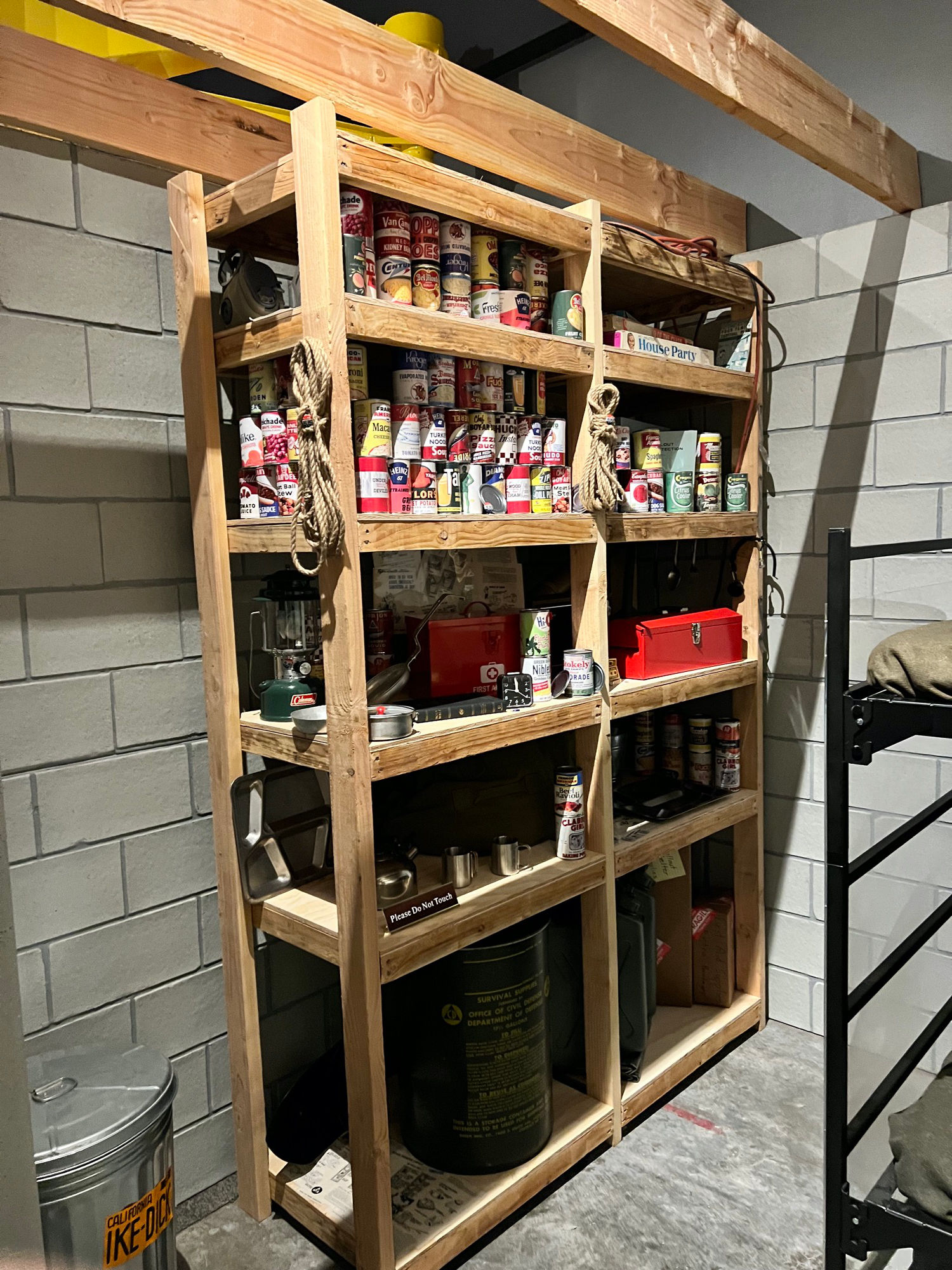
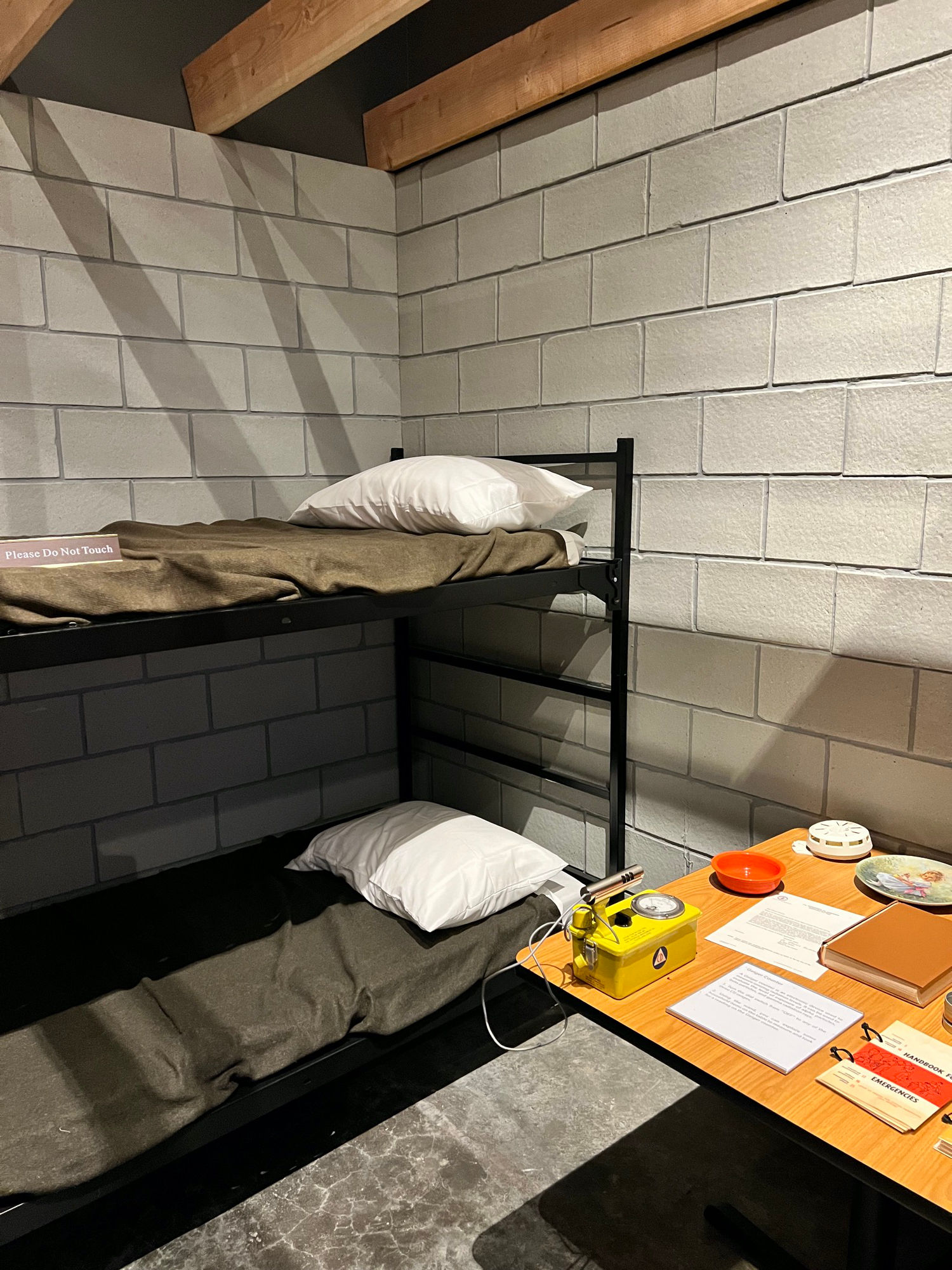

Nixon FoundationFallout Protection
According to the booklet Fallout Protection: What to Know and Do About Nuclear Attack published in 1961 by the U.S. Department of Civil Defense, "...you should prepare to be completely self-sustaining for at least two weeks."
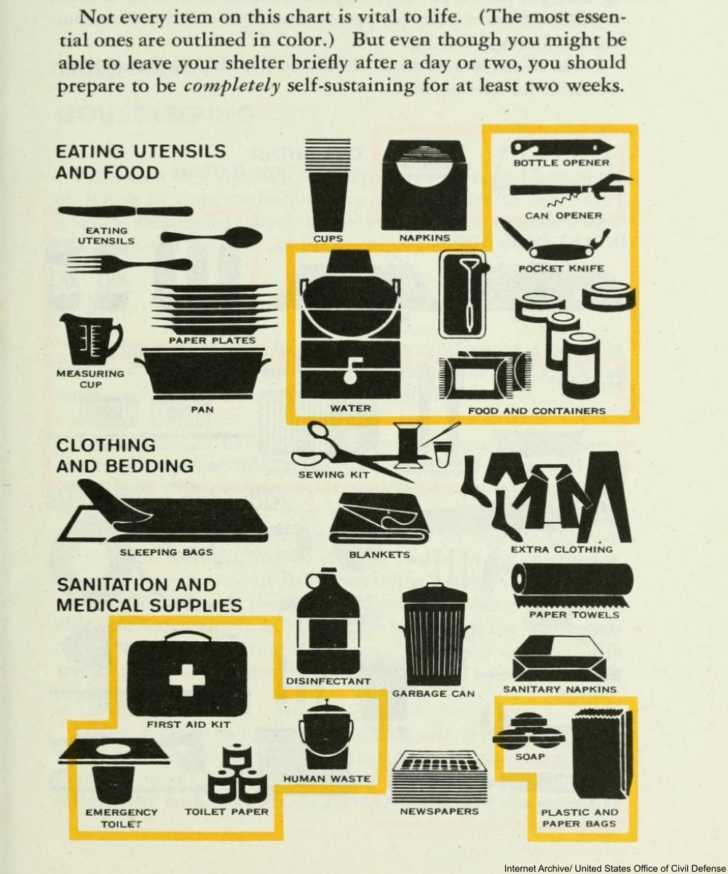 Fallout Protection:
Fallout Protection:
What to Know and Do about Nuclear Attack. United States: U.S. Government Printing Office, 1961.
WIKIPEDIAA fallout shelter is an enclosed space specially designated to protect occupants from radioactive debris or fallout resulting from a nuclear explosion. Many such shelters were constructed as civil defense measures during the Cold War.During a nuclear explosion, matter vaporized in the resulting fireball is exposed to neutrons from the explosion, absorbs them, and becomes radioactive. When this material condenses in the rain, it forms dust and light sandy materials that resemble ground pumice. The fallout emits alpha and beta particles, as well as gamma rays.
Much of this highly radioactive material falls to Earth, subjecting anything within the line of sight to radiation, becoming a significant hazard. A fallout shelter is designed to allow its occupants to minimize exposure to harmful fallout until radioactivity has decayed to a safer level, over a few weeks or months.
A fallout shelter is designed to protect its occupants from:
- The mechanical and thermal effects of a nuclear explosion (or nuclear accident)
- Radioactive fallout, allowing them to survive for a period of time deemed sufficient to allow them to escape safely.








